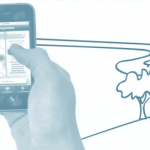 The modern smartphone captures an incredibly valuable array of data. The prospect of connecting up data from the several billion phones in use around the world offers the tantalizing prospect of a global supercomputer in all of our pockets. Lingering concerns remain however about the privacy and security of that data, and such concerns may hamper attempts to liberate that data.
The modern smartphone captures an incredibly valuable array of data. The prospect of connecting up data from the several billion phones in use around the world offers the tantalizing prospect of a global supercomputer in all of our pockets. Lingering concerns remain however about the privacy and security of that data, and such concerns may hamper attempts to liberate that data.
It’s a challenge a team from the Swiss National Science Foundation have taken on in a recent project that proposes new ways to collect and use mobile phone data. In a recent paper, the team highlight their approach, which they refer to as crowdsensing. This allows geographical data to be collected via the sensors in the phone. A common example is map applications that collect data from the accelerometers built into modern phones.
Four distinct approaches were used to both improve crowdsensing whilst also developing best practices for its application. For instance, one project managed to improve location accuracy both indoors and underground in 90% of cases. It’s a comparable success rate to GPS but only requires the phone’s sensor data and radio signals, thus becoming useful even when GPS is blocked. The researchers collect sensor measurements from the smartphones, alongside the Wifi radio’s signal strength. This information is then passed through several machine learning algorithms.
“A major problem for researchers is balancing data and privacy,” the team explain. “Accurate data can cost privacy.”
Breaches of privacy can easily discourage participation, hence why a team from the Chalmers University of Technology in Sweden developed an approach they refer to as ‘differential privacy‘. This uses machine learning to analyze the data, and it protects individuals by inserting random data info information collected via the phone.
Another team, from the University of Geneva, aimed to tackle the processing costs crowdsensing can incur on devices themselves. If users fear that sharing data will slow down their device, they’re much more likely to reject applications that make use of otherwise idle sensors. They utilized game theory to distribute the burden across the network.
By adopting an interdisciplinary approach, the SwissSenseSynergy project hopes to bring new techniques to bare on the problem, and the early results certainly showcase the good early steps made.